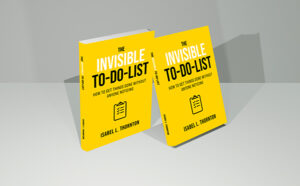Burnout is often viewed as a private struggle—one we suffer through in silence. But hearing the recovery journeys of others can be incredibly validating, especially for autistic adults who may feel isolated or misunderstood. In Embracing Self-Care for Autistic Burnout: Your comprehensive resource for managing autistic burnout, we highlight the powerful personal stories of individuals like Mark, Sarah, and Emma, each of whom overcame burnout in unique ways.
Their experiences offer not just insight—but hope.
Mark’s Story: The Cost of College Masking
Mark was a high-achieving college student who masked his autistic traits to fit in socially and academically. He pushed himself to attend crowded lectures, participate in group projects, and maintain an image of “normalcy.” But beneath the surface, the effort to constantly adapt was taking a toll.
By mid-semester, Mark hit a wall—he stopped attending classes, isolated himself, and experienced a complete shutdown. His recovery started when he acknowledged the need to prioritize his own sensory needs and step away from environments that demanded too much.
Takeaway: Pushing through to meet neurotypical standards often leads to burnout. Self-awareness and accommodations are critical for sustainable success.
Sarah’s Story: Burnout in the Workplace
Sarah worked in a corporate office where noise, interruptions, and constant multitasking left her overstimulated every day. Although she appeared calm on the outside, she was constantly masking her discomfort and emotional fatigue.
After a sudden panic attack at work, Sarah began her journey toward recovery by switching to a remote role, setting firm boundaries around communication, and integrating daily sensory regulation into her routine.
Takeaway: Redesigning your environment and communication style can play a major role in preventing and recovering from burnout.
Emma’s Story: Family Support in Recovery
Unlike Mark and Sarah, Emma wasn’t able to self-advocate easily. Her burnout presented as severe withdrawal—she stopped speaking, stopped eating properly, and seemed unreachable. But with the compassionate support of her family, who took the time to learn about autistic burnout, Emma began to slowly rebuild.
Together, they created a low-stimulation home environment, respected her silence, and allowed her to lead the pace of recovery. Over time, Emma returned to routines she enjoyed—on her own terms.
Takeaway: Recovery is not always quick or linear. Having supportive people who validate your needs can make all the difference.
Why These Stories Matter
Mark, Sarah, and Emma represent just a few of the many voices featured in Embracing Self-Care for Autistic Burnout. Their stories show that burnout is not a failure—it’s a signal. And recovery is not only possible—it’s deeply personal.
“Each story felt like a mirror. I cried reading about people who finally got the support I always needed.” – Amazon Reviewer
By reading their stories, many autistic readers feel less alone—and more empowered to shape recovery plans that fit their lives.
Start Your Own Recovery Journey
Whether you’re in the thick of burnout or just beginning to recognize the signs, Embracing Self-Care for Autistic Burnout offers the stories, tools, and research to guide your next step forward.
🟣 Get inspired on Amazon
💬 “This book reminded me I’m not broken—I just needed rest, and a plan that works for me.”





